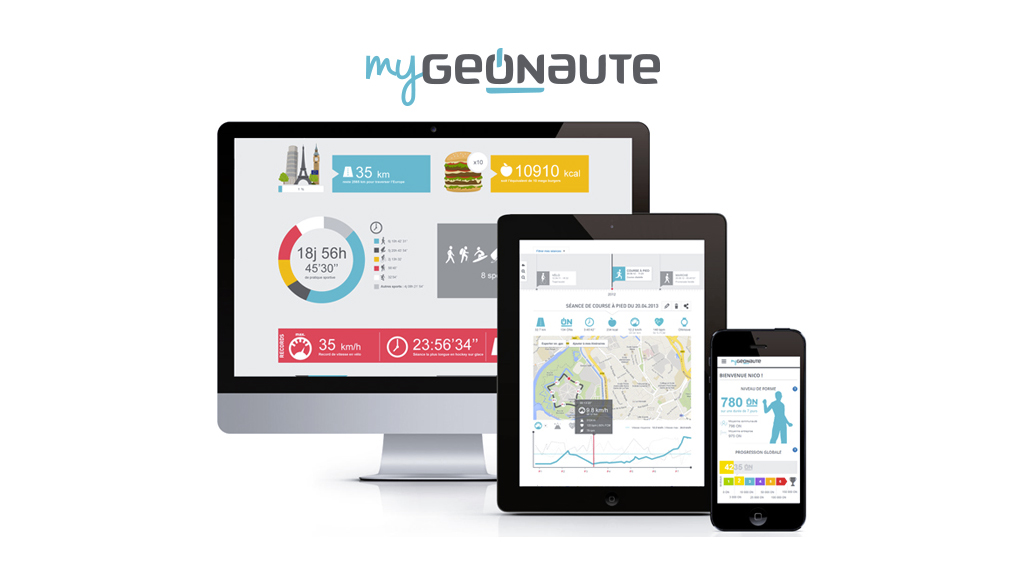

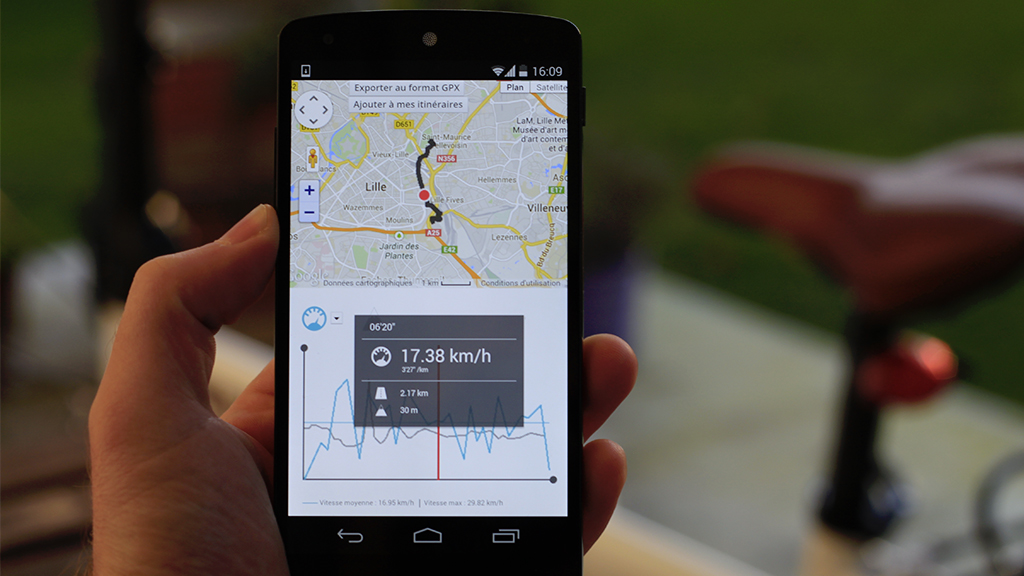
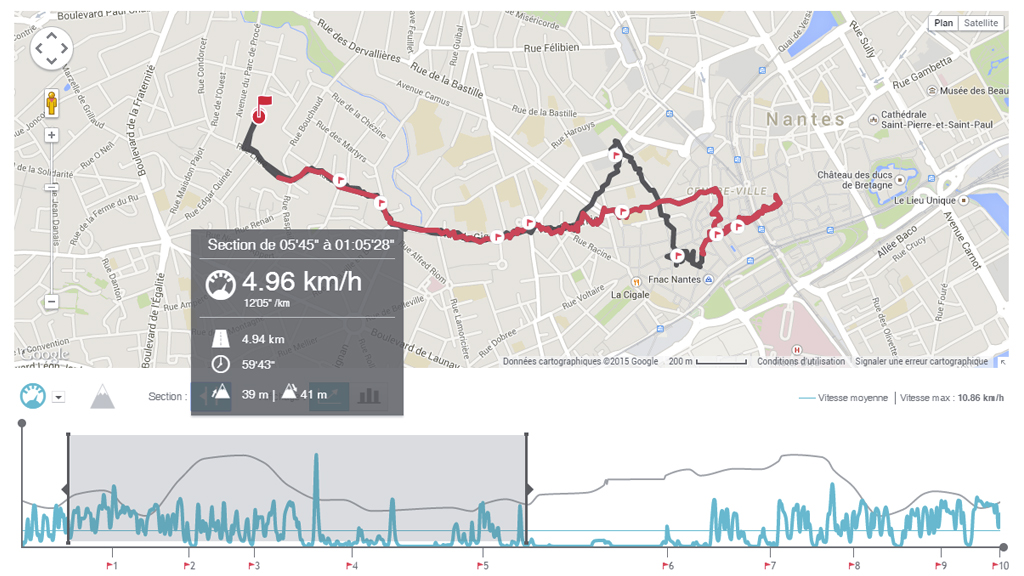
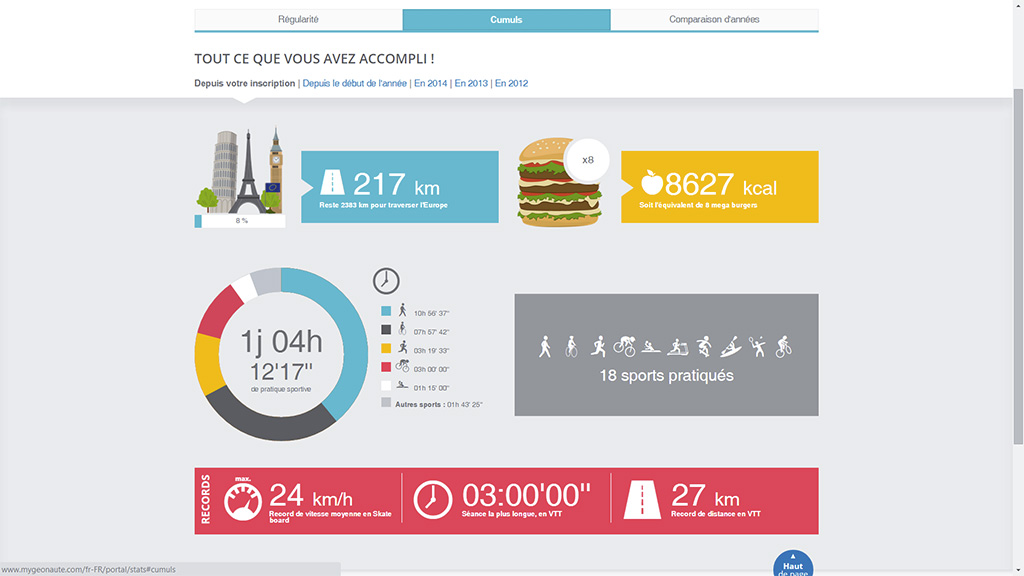
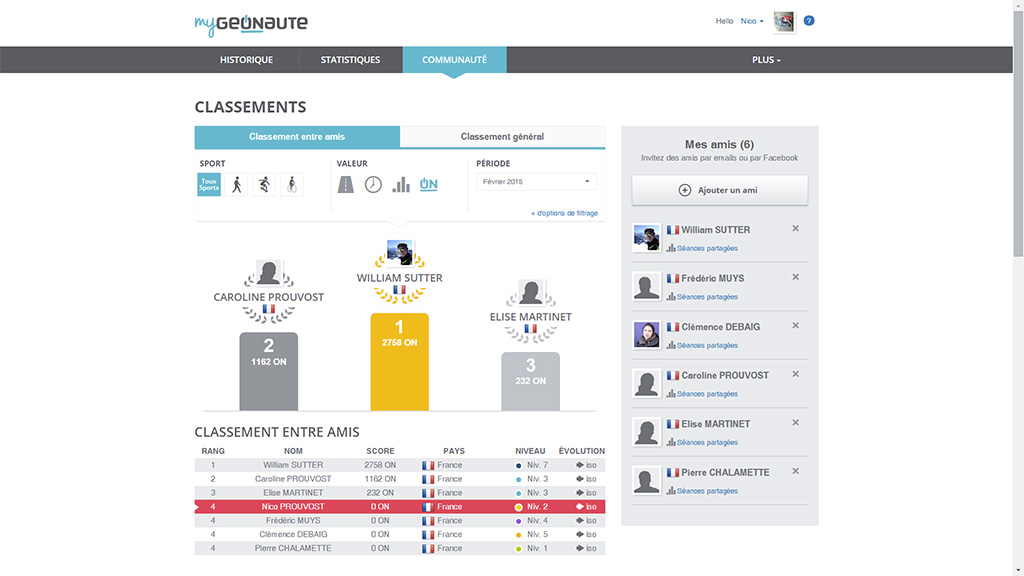
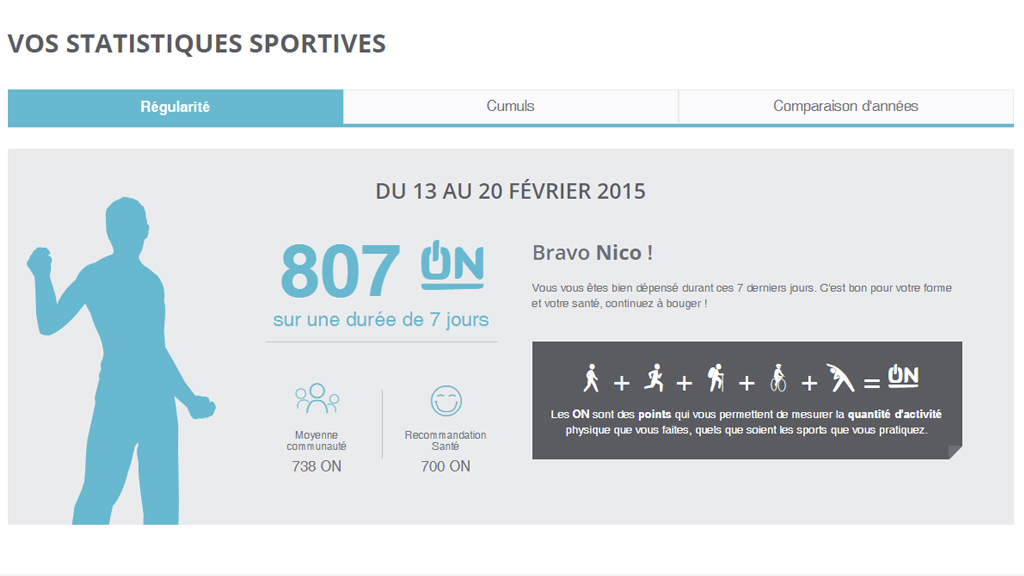

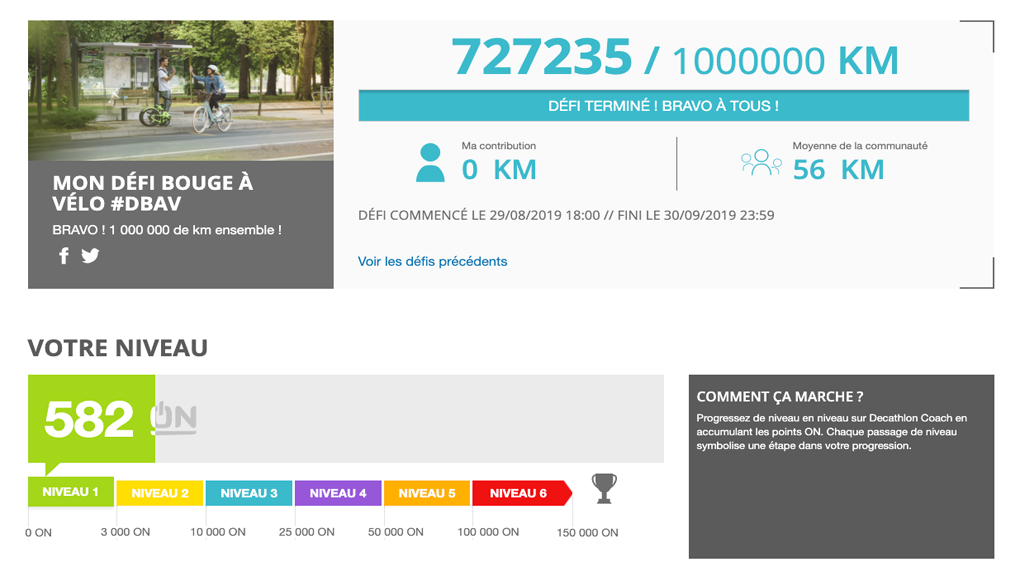
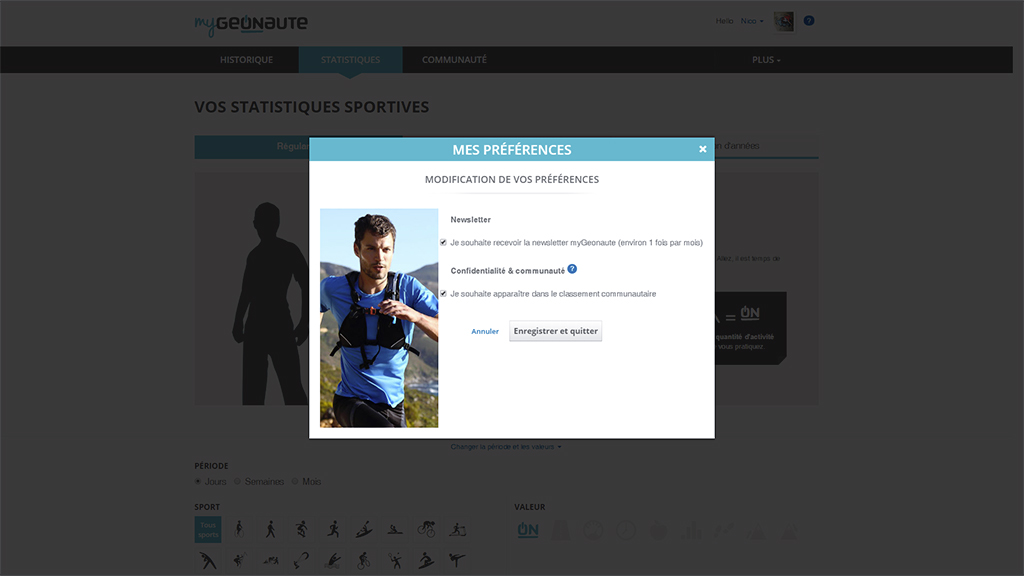
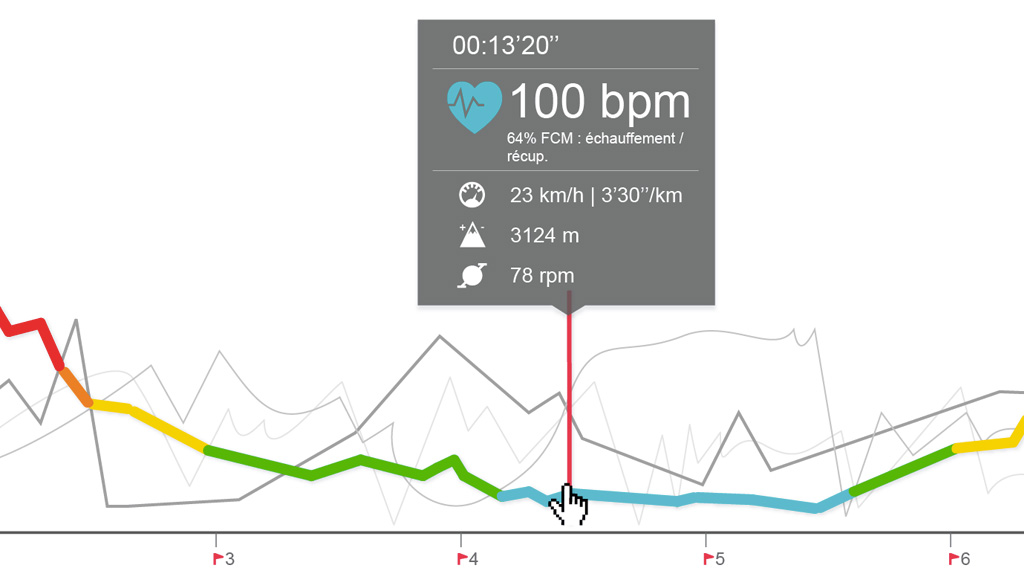

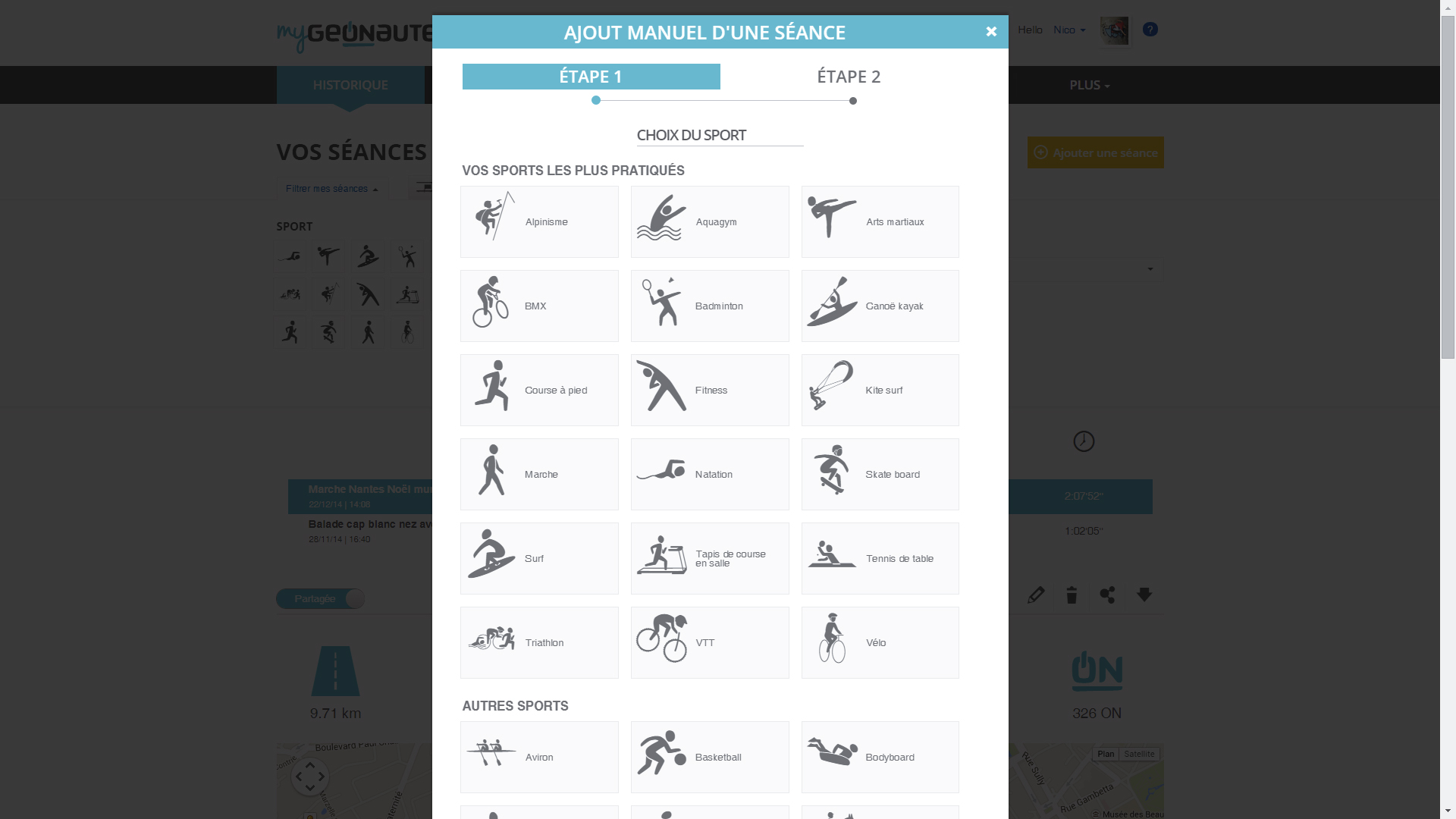
MYGEONAUTE.COM: redesigning Decathlon connected sport platform
TL;DR
From 2013 to 2015, I led the UX/UI redesign of myGeonaute.com—Decathlon’s platform to track and analyze workouts across connected devices. The result:
Finalist – Oxylane Innovation Awards 2013 (Decathlon yearly innovation contest)
Winner – Futurs en Seine Design Award 2014
Responsive, user-tested platform still live today (now decathloncoach.com)
Used by nearly a hundred of thousands of users worldwide
More than 1,000,000 sport sessions uploaded to the platform
Praised for its motivation-oriented features and compatibility across many devices.
The challenge
In 2013, Decathlon had a fragmented digital sports experience: users could track data via various devices, but had no unified, accessible, and motivating way to review or interact with their workout history.
The existing platform was:
Non-responsive (desktop-only)
Poorly designed for motivation and behavior change
Not optimized for the growing range of connected products
Objective
Redesign myGeonaute.com as a responsive, user-centered hub for sports tracking—bringing together data, motivation, and community in one place.
Key goals:
Make sport data accessible anytime, anywhere
Motivate users to stay active and track progress
Create a flexible system compatible with a wide range of devices
Encourage healthy habits through behavior-driven design
My role
UX/UI Designer
I led the experience and interface design:
Conducted user research and 1:1 interviews
Concept tested early ideas with target users
Redesigned the full UI for responsiveness and clarity
Created motivational UX features and flows
Collaborated with PM, devs, system engineers, and brand designers
Key contributions
Unified interface for desktop, tablet, and mobile via responsive design
Introduced motivational mechanics (progress tracking, activity goals, peer comparison)
Translated raw workout data into meaningful, actionable visuals
Led usability testing and iterations based on user feedback
Helped define a design vision across product and brand
Design process
1. Research & discovery
Conducted in-depth interviews to understand users' real motivations:
Stay healthy
Lose weight
Improve performance
Social motivation (comparing or competing with friends)
Validated concepts through early prototypes and user testing
2. UX & Interaction Design
Designed clear, responsive layouts that worked across all devices
Created user flows for:
Uploading workouts (manual or synced from device)
Visualizing workout history
Viewing stats like calories burned, distance, effort zones
Comparing progress over time
Introduced motivational features:
"Are you doing enough?" insights
Progress tracking
Session comparisons
Social leaderboards
3. Visual design
Worked with the brand team to create a clean, energetic UI
Used color and data visualization to reinforce progress and motivation
Ensured accessibility in varied environments and screen sizes
4. Collaboration & iteration
Regular design/dev handoff sessions
Design QA during implementation
Managed input from multiple stakeholders: product, system engineers, brand
Results
User impact
Highly rated by users for ease of use and device compatibility
Continues to serve as the core of the Decathlon Coach platform
Business & brand impact
Finalist at Oxylane Innovation Awards 2013
Winner at Futurs en Seine (Paris, 2014)
Strengthened Decathlon’s digital product ecosystem
Longevity
Platform still in use years later, as the foundation of DecathlonCoach.com
Used by hundreds of thousands of sportspeople worldwide
What I Learned
“Data is not enough—motivation is what keeps people coming back.”
→ Designing for sustained behavior change meant understanding the psychology of sport, not just building dashboards.
“Mobile-first wasn’t a trend—it was a necessity.”
→ Making the platform truly responsive expanded reach and user retention across devices.
“Real teamwork leads to real impact.”
→ Cross-functional collaboration between engineers, designers, and business leads was essential to balance feasibility, scalability, and user experience.
Beyond the Brief
Initiated UX patterns that laid the groundwork for future features (coaching, social sharing, and challenges)
Advocated for early responsive design standards across the org
Contributed to growing UX maturity within the team through testing rituals and cross-team feedback sessions
